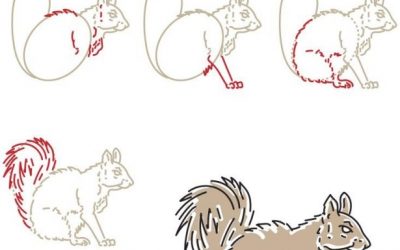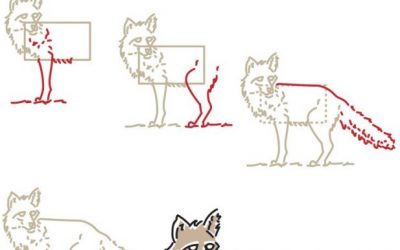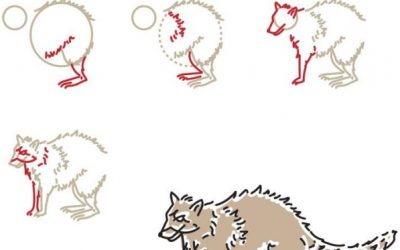
MATERIALS
• Odourless Solvent
• Prismacolor pencils: – Blue – Yellow – Light purple Winsor & Newton Oil colours: – Titanium White – Scarlet Lake – Burnt Sienna – Lemon Yellow – Vandyke Brown – Prussian Blue – Cobalt Blue – Indigo · Art Spectrum Oil colours: – Flesh Tint – Spectrum Red Deep
• Winsor & Newton Linseed Stand Oil
• Paint brushes varied sizes and brands, mostly square tip
STEP ONE
Using Prismacolor pencils (I find they work well for me as the pencil marks seem to dissolve when painted over), sketch out the main points of the painting. I tend to use a blue or brown where the shadow or cool areas of the painting will be, and yellow for the highlighted areas. Then I begin to block in the base colours very thinly using solvent.

STEP TWO
Block in all areas of the painting. It doesn’t matter if it isn’t the exact colour, or if it’s messy, the point is to get rid of all white. Make sure these layers are thin.

STEP THREE
This is where I start to correct the base colours and refine the shapes.

STEP FOUR
Continue refining shapes and correcting tones.

STEP FIVE
Now that the basic points of the painting are in, begin to rework the entire piece, starting with the background. My work is very much a process of layers, starting with a mess and spending the rest of the time fixing, changing and refining it. For this I use a dry brush method, where there is no medium or thinners used.

STEP SIX
Starting to detail and tidy up, by this stage you can see that the trees, hair, shoes and forest floor have been worked on.

STEP SEVEN
Detailing and changes. Here you’ll see I have changed one of the trees which was originally curved, and is now straight. I’ve also worked on the entire painting adding details using a mixture of Linseed Stand Oil and solvent, and correcting tones using the dry brush method.

STEP EIGHT
Details, lots of detail work. Most noticeable on the trees and forest floor. For the pine trees I find dry brushing to be a very useful method in the texture of the bark.

FINAL STEP
The final step in my painting is to adjust anything that I see needs work. All of the final detail work has been finished, the background has been pushed back with a glaze of Prussian Blue mixed with Linseed Stand Oil and solvent, and some areas have been darkened using glazes and dry brushing methods.

ARTIST’S HINTS AND TIPS
• I never use black paint, it may just be a personal preference but I find that it takes the vibrancy out of colours, makes them dull and creates a hole of lifelessness in a painting. Instead I use a mixture of Prussian Blue, Indigo, Spectrum Red Deep and Vandyke Brown to create my darks.
• The best way to learn anything is trial and error, you need to find what works for you.





